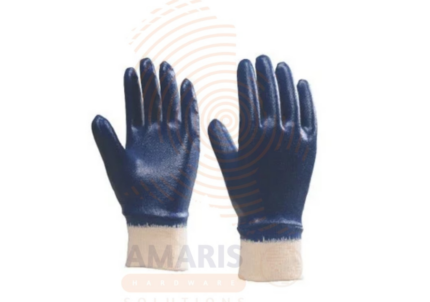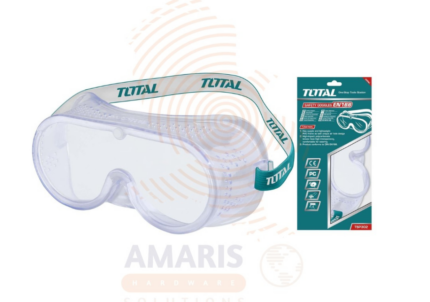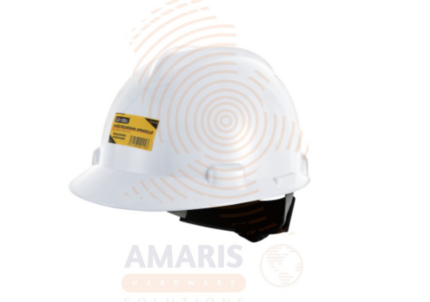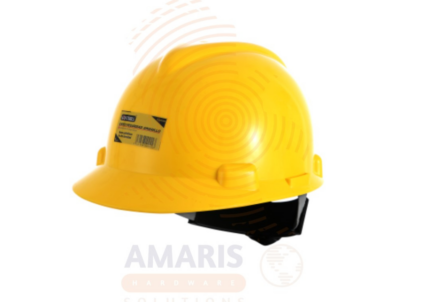Nitrile Gloves
WhatsApp Order
PRODUCT DESCRIPTION
Nitrile gloves are a type of disposable protective glove made from synthetic rubber known as nitrile. These gloves are popular in various industries, including healthcare, laboratory work, and food handling, due to their excellent durability, puncture resistance, and chemical resistance. Nitrile gloves offer an alternative to latex gloves for individuals with latex allergies. They are also known for their snug fit and tactile sensitivity, making them suitable for tasks that require precision and fine motor skills.
Description
Major or common uses of a Nitrile gloves
-
- Medical and Healthcare Settings:
- Examination gloves: Used by healthcare professionals during medical examinations and procedures to prevent cross-contamination and protect against blood borne pathogens.
- Surgical gloves: Employed in surgical procedures to maintain a sterile environment and provide protection for both healthcare workers and patients.
- Medical and Healthcare Settings:
- Laboratories:
-
-
- Nitrile gloves are commonly used in laboratories for handling chemicals, biological materials, and other hazardous substances due to their resistance to a wide range of chemicals.
- Dental Care:
- Dentists and dental hygienists use nitrile gloves for patient examinations, treatments, and other dental procedures to ensure infection control and protection.
- Food Handling and Processing:
- In the food industry, nitrile gloves are utilized by workers handling food to maintain hygiene standards and prevent contamination.
-
- Automotive Industry:
-
-
- Workers in the automotive industry often use nitrile gloves for tasks such as handling oils, lubricants, and chemicals, as well as for general maintenance and repair work.
-
- Cleaning and Janitorial Services:
-
-
- Nitrile gloves are suitable for various cleaning tasks, protecting the hands from exposure to cleaning chemicals and potential contaminants.
- Tattoo and Body Art Studios:
- Tattoo artists use nitrile gloves to maintain a sterile environment and prevent the transmission of blood borne pathogens during tattooing and piercing procedures.
- Manufacturing and Industrial Applications:
- Workers in manufacturing and industrial settings use nitrile gloves for tasks involving chemicals, solvents, and potentially hazardous materials.
-
- Emergency Services:
-
- Nitrile gloves are often part of the standard protective gear for emergency responders, paramedics, and law enforcement personnel.
- DIY and Home Maintenance:
- Individuals engaging in do-it-yourself projects or home maintenance tasks often use nitrile gloves for protection against various substances and to maintain cleanliness.
SAFETY HANDLING PRECAUTIONS
Safety precautions to observe when using Nitrile gloves
- Select the Right Size:
-
-
- Choose nitrile gloves that fit properly. Gloves that are too tight may cause discomfort and limit dexterity, while those that are too loose may compromise protection.
- Inspect for Damage:
- Before use, visually inspect the gloves for any signs of damage, such as tears, punctures, or discoloration. Do not use gloves that appear to be compromised.
- Avoid Allergic Reactions:
- If you or others have latex allergies, nitrile gloves are a suitable alternative. However, some individuals may be sensitive to accelerators used in the manufacturing process. If irritation occurs, discontinue use.
-
- Proper Donning and Doffing:
-
-
- Put on gloves before starting a task and remove them carefully to avoid contamination. Follow proper donning and doffing procedures to minimize the risk of exposure.
-
- Limit Glove Reuse:
-
-
- Nitrile gloves are generally designed for single-use. Avoid reusing disposable gloves, as they may become compromised over time, reducing their effectiveness.
- Be Mindful of Chemical Compatibility:
- Choose gloves that are compatible with the chemicals you are handling. Check the glove's chemical resistance chart to ensure they provide adequate protection against specific substances.
- Avoid Sharp Objects:
- Nitrile gloves provide good puncture resistance, but they are not impervious to sharp objects. Be cautious when handling sharp tools or objects to prevent punctures.
- Change Gloves Between Tasks:
- Change gloves between different tasks or when moving from one area to another to prevent cross-contamination. Do not touch your face, eyes, or mouth with gloved hands.
- Follow Industry Guidelines:
- Adhere to industry-specific guidelines and regulations for glove use in your particular work environment, especially in healthcare, laboratories, and other settings with specific safety protocols.
-
- Dispose of Gloves Properly:
-
- Dispose of used gloves in designated waste containers. Avoid touching the outside of the gloves during removal, and wash hands thoroughly after glove removal.
- Hand Hygiene:
- Before putting on gloves and after glove removal, practice proper hand hygiene by washing hands with soap and water or using an alcohol-based hand sanitizer.
- Training and Education:
- Ensure that individuals using nitrile gloves are properly trained on their correct usage, limitations, and safety precautions.
Related products
Insulated Combination Pliers
An insulated combination pliers is a type of hand tool designed for various gripping, cutting, and twisting tasks, featuring insulated handles to provide protection against electric shocks. These pliers typically have dual functionalities, combining elements of both lineman's pliers and long-nose pliers. The insulated handles are made of materials that offer electrical insulation, making them suitable for use in electrical and live-wire work to reduce the risk of electrical accidents. Insulated combination pliers are commonly used by electricians and other professionals working with live electrical circuits.
Knitted & Pvc Dots Gloves
- Knitted Gloves: Knitted gloves refer to hand coverings that are crafted through the process of knitting, a method of creating fabric by interlocking loops of yarn. These gloves are typically made from various types of yarn, such as cotton, wool, or synthetic fibers. Knitted gloves are known for their flexibility, comfort, and breathability, making them suitable for a wide range of activities and environments. They come in different styles, thicknesses, and designs to cater to various purposes, from lightweight and dexterous gloves for delicate tasks to heavier and insulated options for colder conditions.
- PVC Dots Gloves: PVC dots gloves are a type of work glove that features small raised dots or patterns made from polyvinyl chloride (PVC) on the palm or fingers. These dots enhance the grip and abrasion resistance of the gloves, providing better control and preventing slips when handling objects. The base material of PVC dots gloves can vary and may include fabrics like cotton, polyester, or a blend of materials. These gloves are commonly used in tasks where a secure grip is essential, such as in construction, manufacturing, or general labor. The PVC dots enhance the overall functionality of the gloves without sacrificing flexibility.
Latex Gloves
Latex gloves are protective coverings for the hands made from natural rubber latex. These gloves are commonly used in various industries, including healthcare and laboratory settings, as well as in everyday tasks. Latex gloves provide a barrier against contaminants, bacteria, and viruses, helping to prevent the transmission of infections. They are known for their elasticity, comfort, and tactile sensitivity, making them suitable for tasks that require precision and dexterity. It's important to note that some individuals may be allergic to latex, and in such cases, alternative materials like nitrile or vinyl gloves may be used.
Rubber Coated Gloves (Blue)
A Rubber Coated Gloves (Blue) refers to a type of protective hand wear that is constructed with a base material, commonly fabric or another flexible material, and has a layer of rubber applied or coated onto the surface of the gloves. The rubber coating serves various purposes, such as providing enhanced grip, protection against liquids, chemicals, or abrasions, and potentially increasing the overall durability of the gloves. The "blue" specification in this context likely refers to the color of the gloves, which may have been added for visibility or aesthetic reasons. These gloves are often used in industrial, medical, or other settings where hand protection and tactile sensitivity are important.
Safety Goggles (PVC)
Safety Goggles (PVC) are protective eyewear designed to shield the eyes from potential hazards in various environments, such as industrial workplaces, laboratories, or construction sites. These goggles typically feature impact-resistant lenses and a form-fitting frame to provide a barrier against flying debris, liquids, chemicals, or other materials that could cause harm to the eyes. The primary purpose of safety goggles is to enhance eye safety and prevent injuries by creating a physical barrier between the eyes and potential dangers, ensuring a higher level of occupational or recreational safety.
Safety Helmet (White)
A Safety Helmet (White), commonly referred to as a hard hat, is a head protection device designed to safeguard individuals from head injuries in various industrial, construction, or other occupational settings. The helmet typically consists of a hard outer shell made of impact-resistant materials, such as high-density polyethylene or fiberglass, and an inner suspension system that helps absorb and distribute impact energy. The white color of the safety helmet may serve functional or visibility purposes, such as enhancing the wearer's visibility in low-light conditions or indicating a specific role or status on a work site. The primary goal of a safety helmet is to provide protection against falling objects, impact, and electrical hazards, promoting the overall safety of individuals in hazardous work environments.
Safety Helmet (Yellow)
A safety helmet (yellow) is a protective headgear designed to mitigate the impact of potential head injuries in various industrial, construction, or recreational settings. Typically colored yellow for high visibility, it consists of a hard outer shell made of durable materials, such as plastic or fiberglass, and an inner suspension system to absorb and distribute impact energy. This safety equipment is crucial for safeguarding individuals from falling objects, impacts, or other potential hazards, promoting occupational safety and minimizing the risk of head injuries.
Welding Googles
Welding goggles are specialized protective eyewear designed to shield the eyes from intense light, sparks, and debris generated during welding processes. They typically feature dark lenses that provide effective protection against the bright arc produced during welding, preventing eye injuries and minimizing the risk of vision damage from ultraviolet (UV) and infrared (IR) radiation. Welding goggles also offer a secure and comfortable fit to ensure the safety and well-being of the wearer while engaged in welding activities.


 Acrylic Sealants
Acrylic Sealants Construction Adhesives
Construction Adhesives Double-Sided Tape
Double-Sided Tape Duct Tape
Duct Tape Electrical Tape
Electrical Tape Epoxy & Resins
Epoxy & Resins Masking Tape
Masking Tape
 Automotive Wrenches & Socket Sets
Automotive Wrenches & Socket Sets Battery Chargers & Jump Starters
Battery Chargers & Jump Starters Car Jacks & Stands
Car Jacks & Stands Car Wash & Detailing Products
Car Wash & Detailing Products Diagnostic Tools
Diagnostic Tools Tire Inflators
Tire Inflators Vehicle Lighting
Vehicle Lighting Oil & Lubricants
Oil & Lubricants
 Adhesives & Sealants
Adhesives & Sealants Bricks & Blocks
Bricks & Blocks Cement & Concrete
Cement & Concrete Drywall & Plaster
Drywall & Plaster Flooring (Tiles, Wood, Laminate)
Flooring (Tiles, Wood, Laminate) Lumber & Plywood
Lumber & Plywood Paints, Primers & Coatings
Paints, Primers & Coatings Insulation Materials
Insulation Materials Roofing Materials
Roofing Materials
 Circuit Breakers
Circuit Breakers Electrical Cables & Wires
Electrical Cables & Wires Switches & Sockets
Switches & Sockets Fuses & Relays
Fuses & Relays Connectors & Terminals
Connectors & Terminals Electrical Boxes & Panels
Electrical Boxes & Panels Conduit & Fittings
Conduit & Fittings Lighting Fixtures & Bulbs
Lighting Fixtures & Bulbs Extension Cords & Power Strips
Extension Cords & Power Strips
 Anchors
Anchors Bolts
Bolts Clips & Clamps
Clips & Clamps Screws
Screws Nuts
Nuts Washers
Washers Rivets
Rivets Nails
Nails Threaded Rods
Threaded Rods
 Hammers
Hammers Measuring Tools (Tapes, Levels, Calipers)
Measuring Tools (Tapes, Levels, Calipers) Screwdrivers
Screwdrivers Pliers & Cutters
Pliers & Cutters Saws & Blades
Saws & Blades Chisels & Punches
Chisels & Punches Allen Keys & Hex Keys
Allen Keys & Hex Keys Ratchets & Socket Sets
Ratchets & Socket Sets Wrenches & Spanners
Wrenches & Spanners
 Power Tool Accessories (Blades, Bits, Discs)
Power Tool Accessories (Blades, Bits, Discs) Rotary Tools
Rotary Tools Saws (Circular, Jigsaw, Reciprocating)
Saws (Circular, Jigsaw, Reciprocating) Drills & Drivers
Drills & Drivers Grinders & Sanders
Grinders & Sanders Heat Guns
Heat Guns Nail Guns
Nail Guns Impact Wrenches
Impact Wrenches Batteries & Chargers
Batteries & Chargers
 Pipes & Fittings (PVC, Copper, PEX)
Pipes & Fittings (PVC, Copper, PEX) Plumbing Tools
Plumbing Tools Pumps & Motors
Pumps & Motors Sealants & Adhesives for Plumbing
Sealants & Adhesives for Plumbing Valves & Taps
Valves & Taps Water Heaters
Water Heaters Drainage Systems
Drainage Systems Faucets & Fixtures
Faucets & Fixtures Hoses & Tubing
Hoses & Tubing
 Hinges & Latches
Hinges & Latches Hooks & Brackets
Hooks & Brackets Window Hardware
Window Hardware Chains & Cables
Chains & Cables Casters & Wheels
Casters & Wheels Shelving & Storage Systems
Shelving & Storage Systems Door Handles & Locks
Door Handles & Locks Drawer Slides & Cabinet Hardware
Drawer Slides & Cabinet Hardware
 Personal Protective Equipment (PPE)
Personal Protective Equipment (PPE) Respirators & Masks
Respirators & Masks Safety Glasses
Safety Glasses Safes
Safes Security Cameras
Security Cameras Gloves
Gloves Helmets
Helmets Ear Protection
Ear Protection Fire Safety Equipment
Fire Safety Equipment Locks & Padlocks
Locks & Padlocks Motion Sensors & Alarms
Motion Sensors & Alarms
 Garden Fencing
Garden Fencing Garden Furniture Hardware
Garden Furniture Hardware Lawn Mowers
Lawn Mowers Trimmers & Edgers
Trimmers & Edgers Shovels & Spades
Shovels & Spades Rakes & Hoes
Rakes & Hoes Pruning Shears & Loppers
Pruning Shears & Loppers Watering Systems (Hoses, Sprinklers, Nozzles)
Watering Systems (Hoses, Sprinklers, Nozzles)
 Interior Paints
Interior Paints Paint Brushes & Rollers
Paint Brushes & Rollers Paint Strippers & Thinners
Paint Strippers & Thinners Paint Trays & Accessories
Paint Trays & Accessories Exterior Paints
Exterior Paints Spray Paints
Spray Paints Primers & Undercoats
Primers & Undercoats Varnishes & Stains
Varnishes & Stains
 Gaskets & Seals
Gaskets & Seals Hydraulic Fittings
Hydraulic Fittings Industrial Fasteners
Industrial Fasteners Industrial Hoses
Industrial Hoses Lubricants & Greases
Lubricants & Greases Metal Sheets & Bars
Metal Sheets & Bars Bearings & Bushings
Bearings & Bushings Belts & Pulleys
Belts & Pulleys
 HVAC Filters
HVAC Filters Insulation for HVAC
Insulation for HVAC Air Conditioners
Air Conditioners Refrigerants
Refrigerants Ventilation Ducts & Fittings
Ventilation Ducts & Fittings Thermostats & Controllers
Thermostats & Controllers Fans & Blowers
Fans & Blowers
 Pegboards & Hooks
Pegboards & Hooks Shelving Units
Shelving Units Storage Bins & Containers
Storage Bins & Containers Toolboxes & Tool Chests
Toolboxes & Tool Chests Workbenches
Workbenches Drawer Organizers
Drawer Organizers Labeling Supplies
Labeling Supplies
 Welding Accessories (Clamps, Brushes)
Welding Accessories (Clamps, Brushes) Welding Electrodes & Rods
Welding Electrodes & Rods Welding Helmets & Gloves
Welding Helmets & Gloves Welding Machines
Welding Machines Soldering Irons & Stations
Soldering Irons & Stations Flux & Solder Wire
Flux & Solder Wire
 Generator Accessories
Generator Accessories Inverters
Inverters Portable Generators
Portable Generators Power Inverters
Power Inverters Transfer Switches
Transfer Switches Diesel & Gasoline Generators
Diesel & Gasoline Generators
 Transport Equipment: Carts, Dollies, and Hand Trucks
Transport Equipment: Carts, Dollies, and Hand Trucks Storage Solutions: Pallets, Racks, and Containers
Storage Solutions: Pallets, Racks, and Containers Lifting Equipment: Hoists, Cranes, and Jacks
Lifting Equipment: Hoists, Cranes, and Jacks Conveyors and Accessories: Belts and Rollers
Conveyors and Accessories: Belts and Rollers








